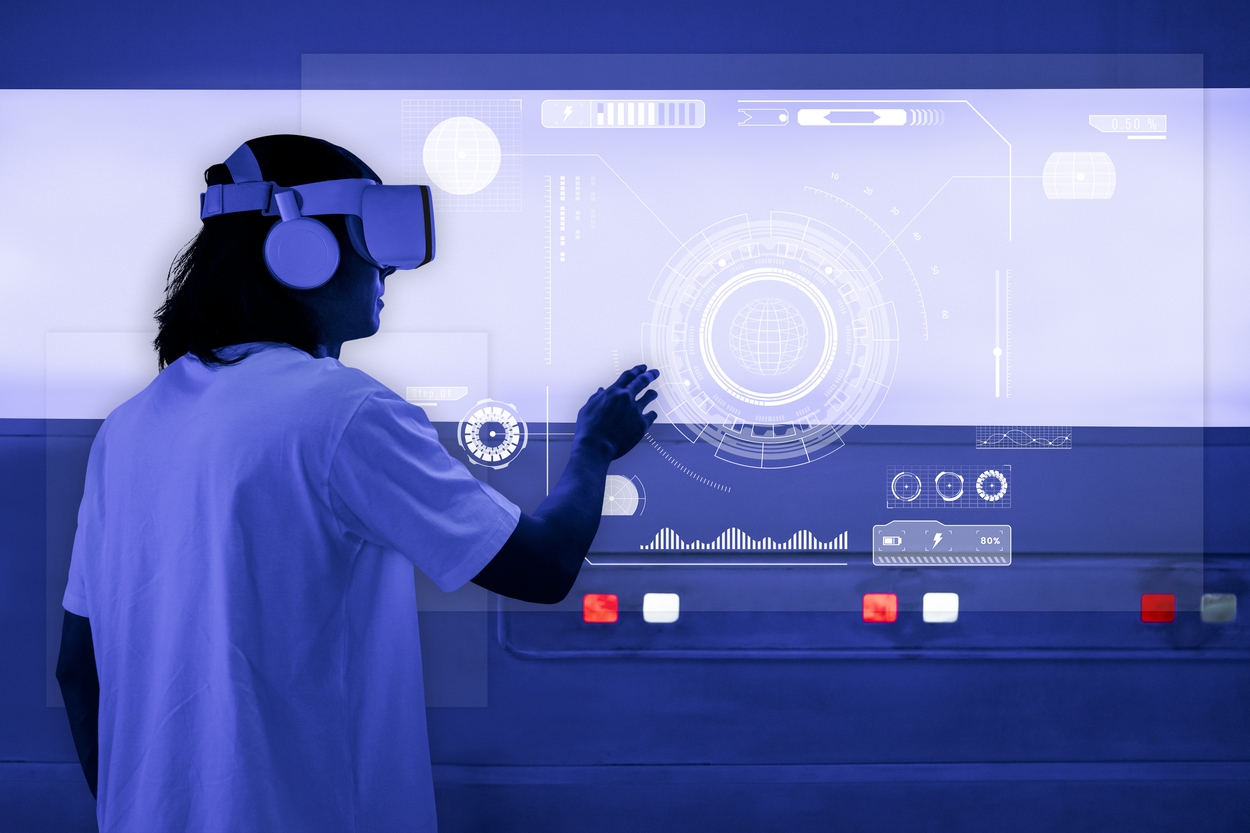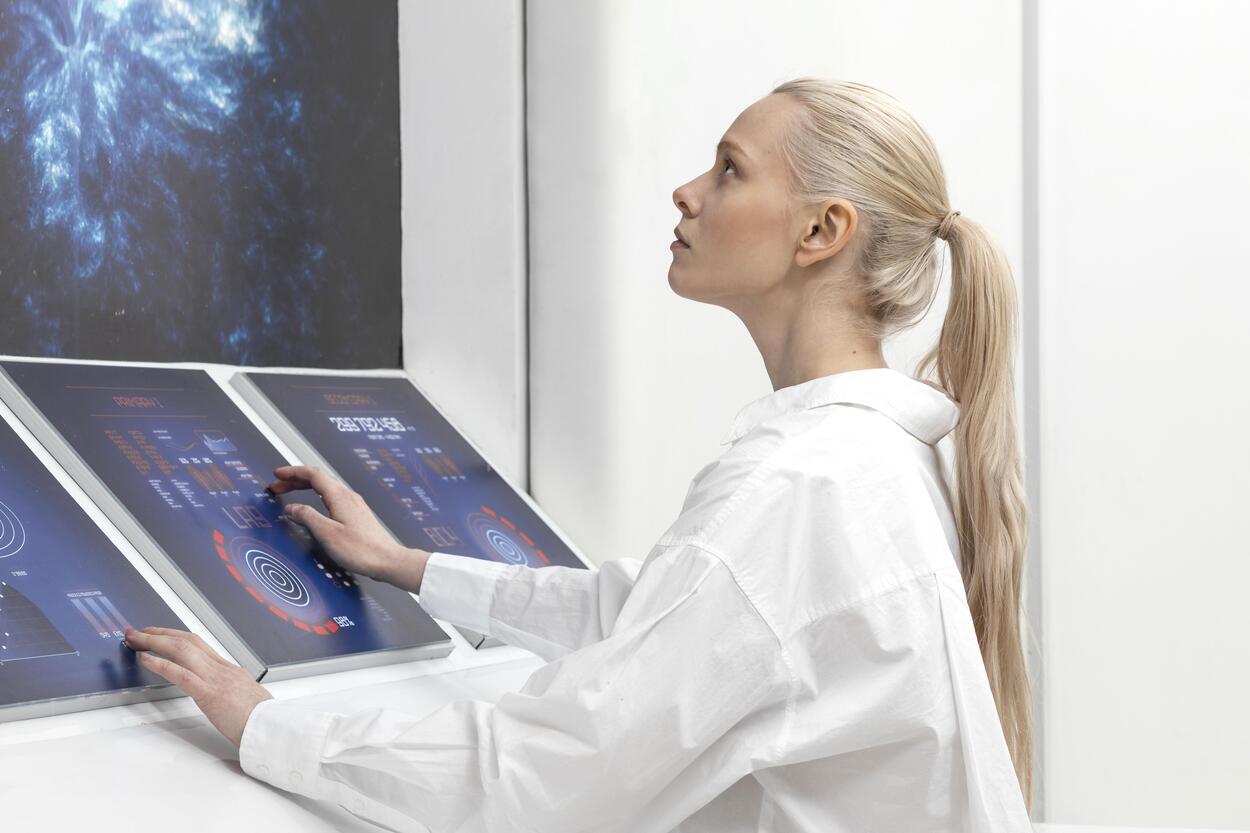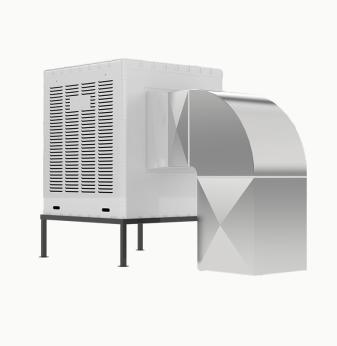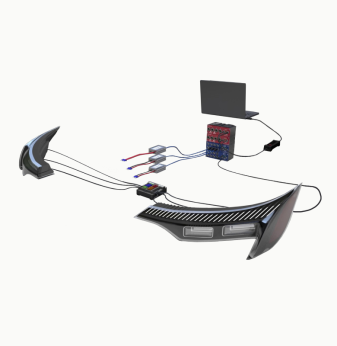Next-Gen Human-Machine Interfaces: From Haptics to Mind-Controlled Devices

Human-Machine Interfaces (HMIs) have come a long way from mechanical buttons and monochrome displays. Today, we are entering an era where machines understand voice, respond to gestures, provide immersive feedback through haptics, and even react to our thoughts through brain-computer interfaces (BCIs).
At Promwad, we see these advancements not just as a trend, but as a technological shift shaping the future of embedded systems across industries.
Why Next-Gen HMIs Matter
Modern users expect intuitive, seamless interaction with devices. Whether it's adjusting smart home lighting with a voice command, navigating a surgical robot with haptic feedback, or controlling a drone with eye movement, the quality of human-machine interaction directly impacts usability, safety, and performance.
According to MarketsandMarkets, the global HMI market will reach $7.7 billion by 2027, growing at a CAGR of 9.8%. This surge is driven by demand for automation, accessibility, and immersive user experiences.
Categories of Next-Gen Interfaces
| Interface Type | Description | Key Use Cases |
| Haptics | Provides tactile feedback through vibration, force, or texture | Medical robotics, gaming, remote control systems |
| Voice Control | Uses NLP to interpret spoken commands | Smart homes, industrial automation, automotive |
| Gesture Recognition | Interprets hand or body movements via cameras or sensors | AR/VR devices, automotive control, robotics |
| Eye Tracking | Tracks eye movement to control interfaces or provide input | Assistive tech, gaming, driver monitoring |
| Brain-Computer Interface (BCI) | Detects brain activity to issue commands | Neuroprosthetics, military applications, accessibility |
Emerging Applications by Industry
1. Healthcare and Medical Devices
- Surgeons use haptic-enabled robotic systems for precision operations.
- Assistive devices allow disabled users to control wheelchairs using EEG signals.
- Voice-controlled medical instruments improve sterility and efficiency.
2. Automotive
- Gesture control in infotainment systems reduces driver distraction.
- Eye-tracking monitors drowsiness and cognitive load.
- Haptic steering wheels provide lane departure warnings.
3. Industrial Automation
- Voice and gesture control reduce need for contact in hazardous environments.
- Haptic interfaces give operators real-time feedback in remote handling.
- BCIs could allow hands-free control of machinery in future high-risk applications.

4. Consumer Electronics
- Smart glasses with eye tracking and gesture interfaces.
- Wearables with embedded haptic feedback for real-time notifications.
- Gaming consoles with immersive controllers and adaptive feedback.
Technological Enablers Behind the Interfaces
- Microelectromechanical Systems (MEMS): Enable miniature sensors for touch, pressure, and motion.
- Natural Language Processing (NLP): Powers voice recognition and contextual understanding.
- AI and Machine Learning: Train models for accurate gesture and facial recognition.
- Neuroimaging Devices (EEG, fNIRS): Form the hardware layer of non-invasive BCIs.
Table: Key Technologies and Applications
| Technology | Role | Example Applications |
| MEMS Sensors | Detect gestures, pressure, motion | Smart wearables, AR controllers |
| Voice AI | Understand spoken commands | Virtual assistants, IVR systems |
| Computer Vision | Interpret gestures, track eyes | Smart TVs, industrial robots |
| EEG Interfaces | Capture brain signals | Neurorehabilitation, prosthetics |
Challenges in Implementing Next-Gen HMIs
- Latency and Real-Time Processing: Interfaces must respond within milliseconds to feel natural.
- Power Consumption: Wearables and portable devices need ultra-low power components.
- Data Privacy: Voice and brain data require stringent security protocols.
- User Adaptability: Interfaces must be intuitive and inclusive for all users.
Analyst Perspectives
"The next decade will bring a fusion of AI and neurotechnology into mainstream consumer devices," says Dr. John Donoghue, a pioneer in brain-computer interface research.
According to Deloitte Insights, 70% of industrial firms plan to adopt gesture and voice-controlled HMIs within the next five years as part of digital transformation initiatives.
How Promwad Supports Next-Gen Interface Development
Promwad engineers embedded systems that bring human-machine interaction to the next level:
- Design of low-latency haptic feedback systems
- Integration of MEMS-based motion and gesture sensors
- Development of NLP pipelines for embedded voice control
- Custom hardware design for EEG-based interfaces and biosignal acquisition
Our team works with clients across medtech, industrial, and consumer markets to build HMIs that improve user experience and device performance.
Conclusion: Toward Seamless Human-Technology Integration
Next-generation human-machine interfaces are turning science fiction into engineering reality. By merging embedded systems with intuitive inputs—touch, sound, motion, and thought—engineers are redefining how we interact with machines. At Promwad, we’re excited to be part of this transformation, helping businesses bring more intelligent and natural user interfaces to life.












